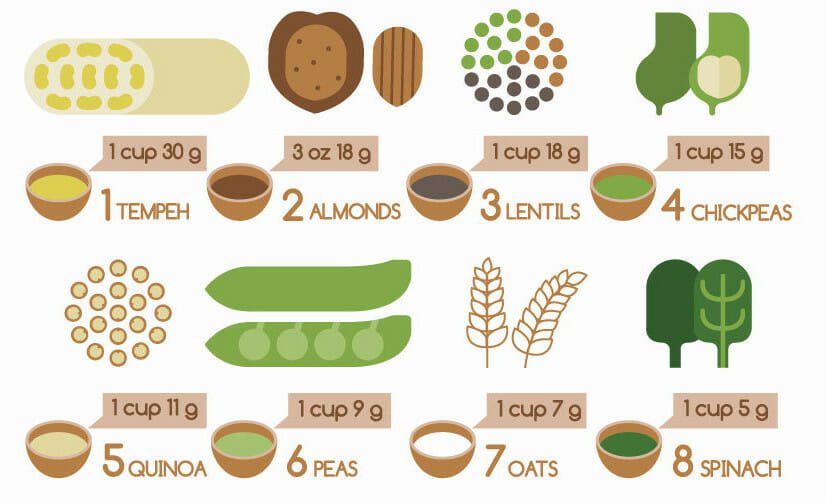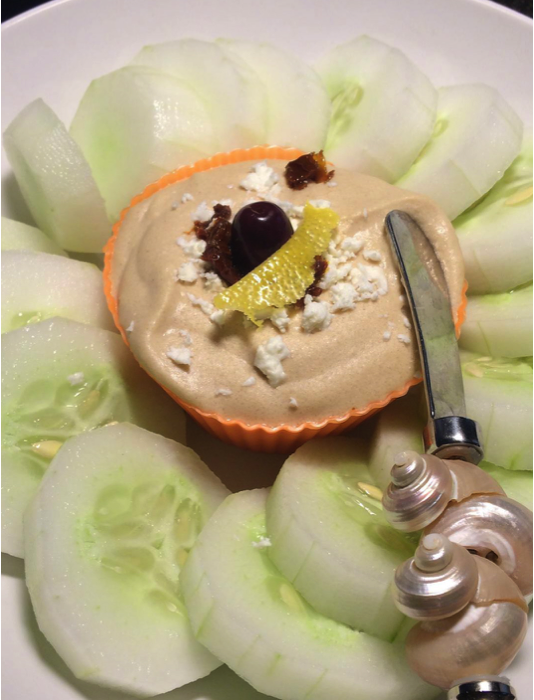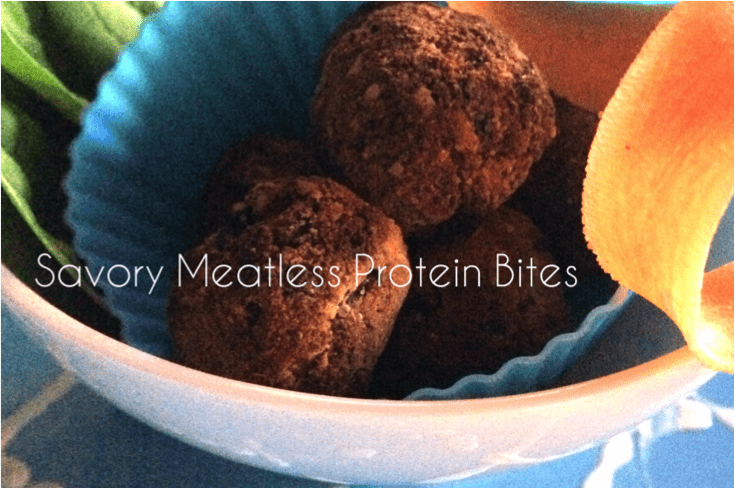You’re vegan, huh? No meat at all. Wow.
Interesting… so, how do you know if you get enough protein?
Here it is — the standard almost scripted inquiry that vegans likely encounter, day in and day out around water coolers across the country.
Non-vegans learn of their preferences on animal consumption and this tired but well-meaning interview process begins. Cue the eye-roll.
Typically, the question is followed up with a reasonable response in the form of assurance such as Lots of beans. or Soy.
Seeds, nuts, quinoa, and a variety of protein powders such as hemp, rice, and pea, are all other ideal options which vegans reach for to supplement their protein intake.
Which certainly answers the question, “What do you eat for protein?”. However, it doesn’t answer the question, “How do you know if you are getting enough protein?”
Looking for an easy way to dial in your diet; click here to use the IIFYM macro calculator to find out your individual macros.
Crunching Numbers

There is only one way to know if you are getting enough protein (or carbs or fats, for that matter) and the answer is actually consistent for everyone, not just for vegans.
The only way to know if you are getting enough protein is:
1. To know how much you need.
and
2. To track it.
Let’s start with number two. Tracking is pretty easy to figure out.
Especially for those vegans who primarily get their protein source out of a package. Turn the package around, scan the nutritional data and voilà, the amount of protein per serving is right there in black and white.
Go low-tech and jot it down on a piece of paper or go high-tech and punch it into an app. Done.
But number one, on the other hand, could be a bit more of a complicated question to answer.
Remove the complication, let us help you build your Macro Blueprint.
The short answer is it depends on many factors.
The long answer is:
It depends on…
– Gender
– Age
– Height and Weight
– Activity Level
– Whether you want to lose fat, build muscle, or maintain your current body makeup
– Age
– Height and Weight
– Activity Level
– Whether you want to lose fat, build muscle, or maintain your current body makeup
Figuring out the answer to ‘it depends on’ can have you arousing brain neurons that have been asleep since 11th-grade math class.
(“Anyone? Anyone? Bueller?”)
What’s more, the answers to these questions change over time as new circumstances arise.
This only further complicates an already complicated conundrum.
If right about now you’re wishing that someone has come up with a nifty calculator in the same vein as those mortgage-rate number cruncher things, you’re down to two wishes.
There is such a thing, and the best part is- it’s free.
As a bonus, you’ll find out your carb and fat requirements as well.
Which brings up another point.
Vegans tend to get too many carbs and too much fat to meet their optimal fuel requirements. This is where IIFYM coaches can step in and guide you through the process.
Zeroing in on the Basics
Ironically, when viewing things from a sheer macronutrient perspective, the vegan diet plan closely resembles the stats on the Standard American Diet program, (you know, pizza, burgers, nuggets, lattes, etc.), which accounts for far too much carb and fat intake and not nearly enough protein.
The quality of food may be on the opposite ends of the spectrum, but when comparing apples to apples, or in this case macronutrient to macronutrient, they are essentially the same.
So organic, non-GMO, animal cruelty-free, high-fiber, additive-free, chemical-free, all-natural, local, homegrown, leafy-green, fresh, high in micronutrients like vitamins and minerals, etc… these are all concepts which point to the utmost standards in the human consumption of food and which are typically valued by followers of the vegan diet lifestyle.
Which is a good thing…No, it’s a great thing.
However, all of these considerations more often than not, overlook the most fundamental consideration which our bodies require. They miss the mark in determining the correct amount of macronutrients (which refers to the basic nutrients: proteins, fats, and carbs) required for an individual person.
Each person needs a particular amount of these macronutrients in order to function properly.
Vroom-Vroom

Consider this: a standard gas-powered vehicle needs fuel to drive. While there are several different levels of quality of gasoline to choose from at the fill-up station, there is no getting around it, the device needs fuel.
And, it also needs oil.
And water.
It may not need as much oil or water as it does, compared to fuel, but it just won’t function without all three being available.
Further, let’s say the fuel, oil and water are provided, just in the wrong amounts. Well, it may certainly roll on down the road, but it isn’t functioning properly and certainly not optimally. The damage is likely being done to the vehicle.
Same with us. We need all three macros in certain amounts.
Vegans Diet Plan and IIFYM
The vegan diet plan and If It Fits Your Macros [IIFYM] not only complement each other, it is actually critical for vegans to work IIF YM into their routine if they are looking to achieve peak performance.
“Am I going to have to track stuff?”, you ask.
Well, yes.
There is some effort involved. You’ll have to pay attention and be aware.
But for vegans, this should really be a non-issue. As a rule, vegans tend to have the admirable quality of going through life with their eyes open.
Here are some points to consider:
-Each person has a specific target of macronutrients (protein, carbs, and fats) to meet in order to achieve optimal health. [1]
-IIFYM provides an easy-to-use and free tool in the form of a calculator which determines individual macronutrient needs (based on age, gender, height, weight, activity levels and physical goals)
-IIFYM provides an easy-to-use and free tool in the form of a calculator which determines individual macronutrient needs (based on age, gender, height, weight, activity levels and physical goals)
Many vegans are challenged with the prospect of sufficient protein supplementation in their regular diets. Many vegans account for an overabundance of fats and carbs in their regular diet plan.
Combining the vegan lifestyle together with the IIFYM tracking method serves as a convenient solution for vegans to meet the challenge of fulfilling their daily macronutrient needs.
Are you ready to get started?
Click here to use the IIFYM calculator and to find out your individual macronutrient requirements.
Bonus Tracks
Enjoy the following recipes that were developed for vegans who are looking to increase their protein consumption on a regular basis.
They are lightning quick to put together and were designed to be made in bulk and stored in the fridge or freezer in order to be on hand for quick access to fully prepared nutritionally correct nourishment. They were also created with versatility, frugality, and portability in mind. On-the-go fit foodies, rejoice.
They are lightning quick to put together and were designed to be made in bulk and stored in the fridge or freezer in order to be on hand for quick access to fully prepared nutritionally correct nourishment. They were also created with versatility, frugality, and portability in mind. On-the-go fit foodies, rejoice.

The Real Deal Hummus
12 servings
¾ cup per serving
Prep time: 10 minutes
¾ cup per serving
Prep time: 10 minutes
- 3-4 cups water
- ¾ cup lemon juice
- 3 cups cooked chickpeas
- 12 scoops pea protein powder
- 3 TBS extra virgin olive oil
- 6 TBS toasted sesame seeds
- 1 TBS ground cumin
- 6 cloves garlic (medium)
- Salt to taste
For garnish:
- 6 pieces sun-dried tomatoes
- 6 kalamata olives
- lemon zest
- crushed red pepper flakes
- almond feta cheese
- 6 cucumbers (large)
How to Instructions:
1. Gather together all of the ingredients (mise en place).
2. In a high-powered blender (like a Vita-Mix or Blend-Tec), or a food processor, combine all the ingredients in the order listed, except for the garnish ingredients.
3. Pulse three to five times to combine initially.
4. Then blend at the lowest setting for about thirty seconds.
5. Gradually bring the speed up to the highest setting and blend for about thirty seconds.
6. Add some extra water, a little at a time to improve consistency.
7. If it happens to get too runny, it could be thickened with a small amount of glucomannan or tapioca starch. Just be careful not to overdo it or it will get slimy.
8. Serve in an interesting dish for a house party appetizer or it could be separated into individual servings to store in the fridge or freezer for grab and go meals.
9. Garnish with the crumbled almond feta cheese, the chopped sun-dried tomatoes and the kalamata olives on top.
10.Finish by artfully placing thick lemon zest strips on top of the olives and by sprinkling with crushed red pepper flakes, if you enjoy a little heat.
11. Add any vegetable of your choice
12. Enjoy.
Note: This hummus will stay fresh in the fridge for at least a week. In the freezer, it would last at least two months.
Estimated Stats:
21g Carbs
10g Fat
20g Protein
259 Calories per serving
21g Carbs
10g Fat
20g Protein
259 Calories per serving
Estimated Cost:
$1.20 per serving
$1.20 per serving

Savory Meatless Protein Bites
12 servings
6 bites per serving
Prep time: 1 hour
Cook time: 20 minutes
6 bites per serving
Prep time: 1 hour
Cook time: 20 minutes
(Ingredients)
Dried Flavor Blend:
- 1 oz dried porcini mushrooms
- 1 TBSP coffee
- ½ packet dried roasted seaweed
- 1TBSP black peppercorns
- 1 TBSP dried toasted onion
Meal Flavor Blend:
- 1 cup oat bran
- 20 scoops pea protein
- 1 cup Almond Flour
- 4 TBSP peanut butter powder
- 1 TBSP sesame seeds
- 2 TBSP all-purpose seasoning
- 2 TBSP nutritional yeast
- 1 tsp chili Powder
- 1 tsp dill
- 1 TBSP cocoa powder
Moist Flavor Blend:
- 4 (4 oz.) cans mushroom pieces (drained, reserve liquid)
- 4 TBSP liquid aminos
- 1 tsp. Liquid Smoke (any flavor)
- 1 large clove garlic
- 2 tsp spicy brown mustard
- 1 tsp horseradish 1 Teaspoon
Other:
- 1 ½ cup reserved mushroom liquid
- Water as needed
- avocado oil spray
How to Instructions
1. Gather all Ingredients (mise en place).
2. Set the oven to 450.
3. Pulse the Dried Flavor Blend ingredients in a food processor two to three times until coarse (not to a fine powder).
4. In a large mixing bowl toss together Meal Flavor Blend and the coarsely chopped Dried Flavor Blend ingredients until well combined.
5. Mix the Moist Flavor Blend ingredients in a food processor one to two times until coarsely chopped.
6. Fold the Moist Flavor Blend ingredients into the dry ingredients until well combined.
7. Add reserved mushroom liquid a little at a time and add water if necessary to achieve a cookie dough consistency.
8. Using a cookie scoop or a tablespoon, scoop out a one-ounce portion (which is around two tablespoons) and roll into a ball.
9. Arrange the protein bites on a cookie sheet that has been set on a wire rack. Make sure the bites do not touch.
10. Spritz the protein bites with avocado oil.
11. Bake for 10 minutes.
12. Remove the cookie sheet from the oven and flip the protein bites over to the opposite side.
13. Spritz with avocado oil and return to the oven for an additional 10 minutes.
Recipe stats:
18.4g Carbs
10g Fat
32.2g Protein
262.2 Calories
10g Fat
32.2g Protein
262.2 Calories
Estimated cost per serving: $1.39
Notes: To freeze, place the cookie sheet in the freezer, leaving the pieces arranged. Once they are frozen solid, toss in a plastic freezer bag or vacuum seal and return to freezer.
These bites should last in the refrigerator for at least a week and in the freezer for at least two months.
No comments:
Post a Comment